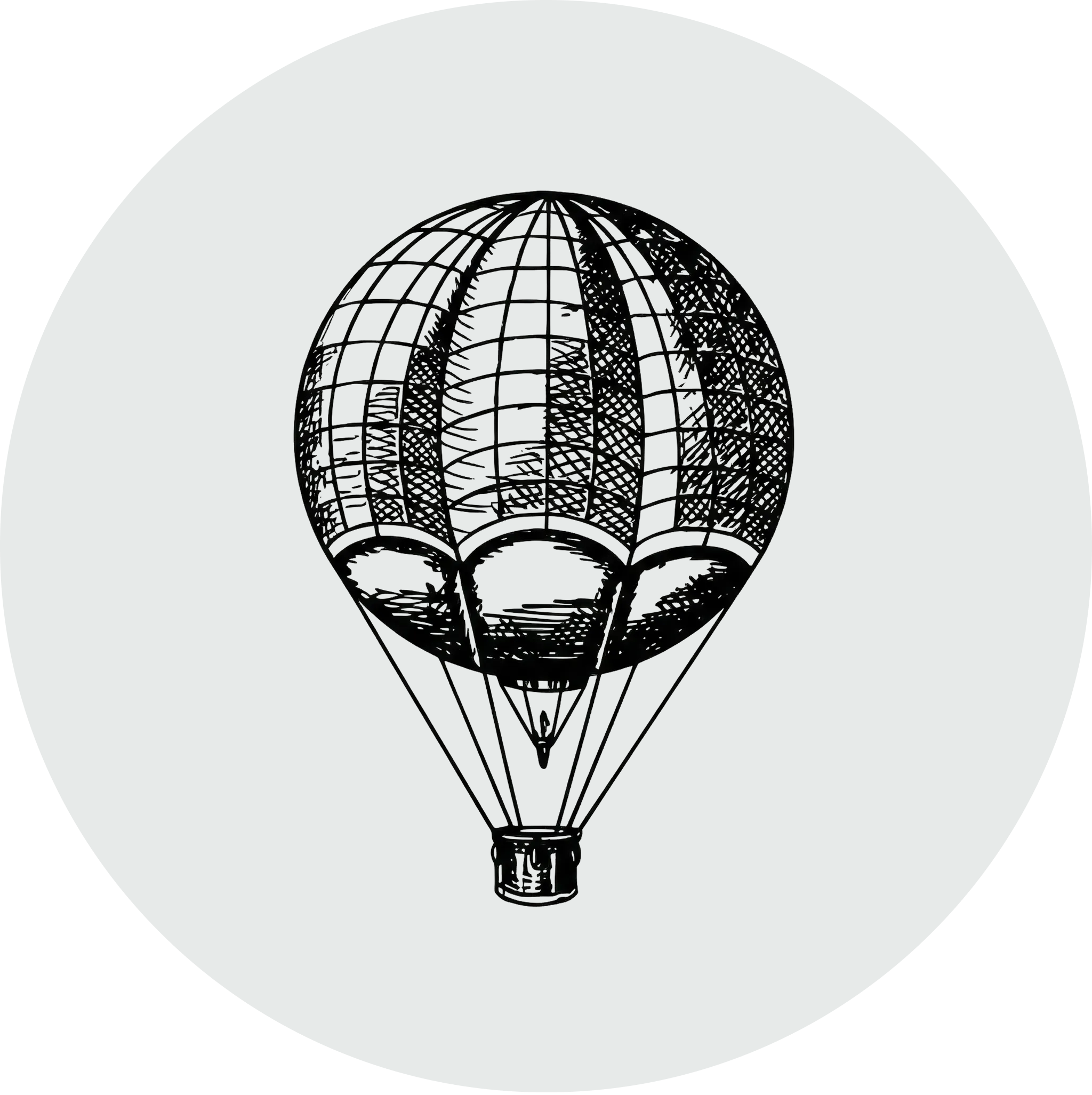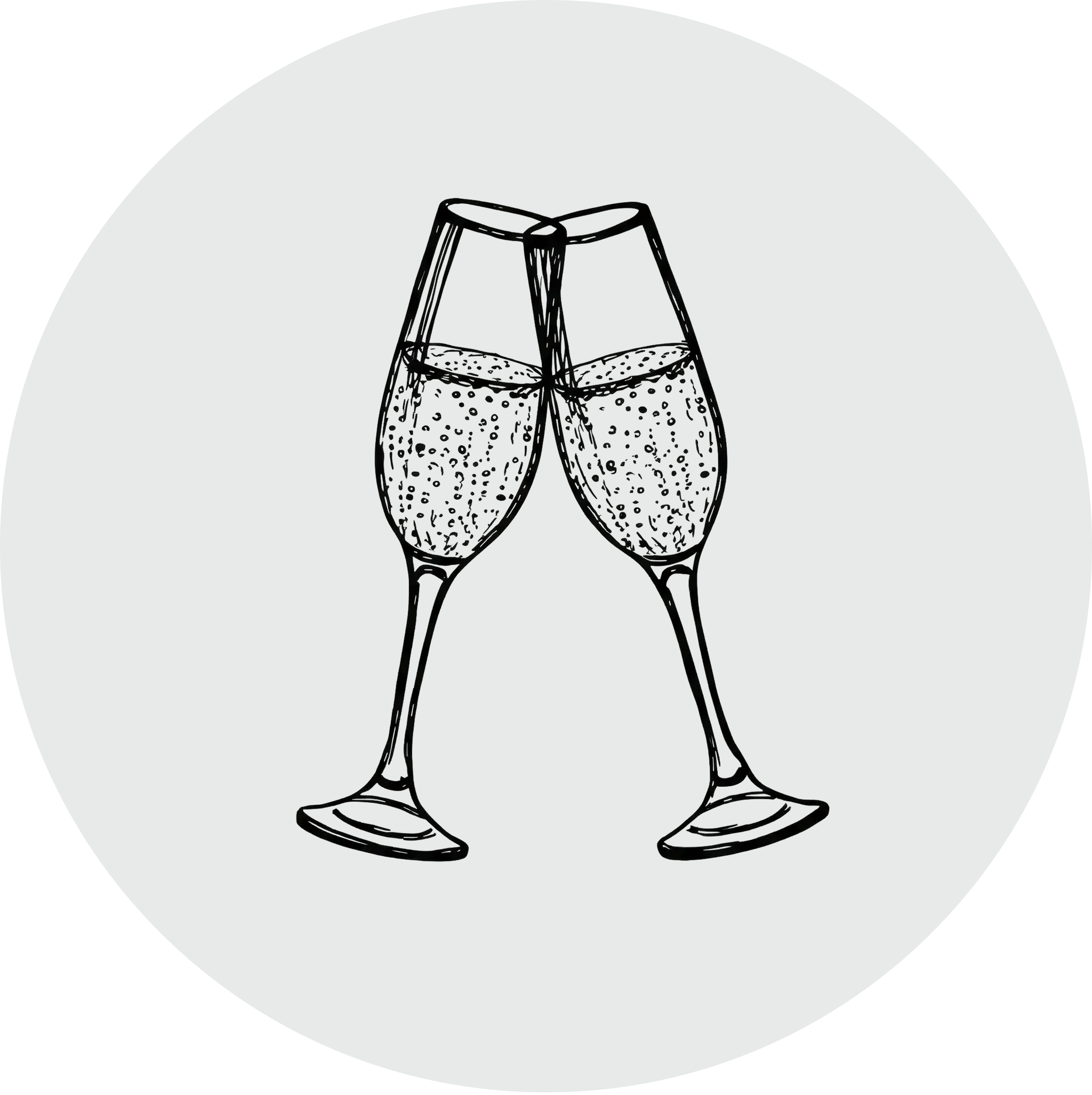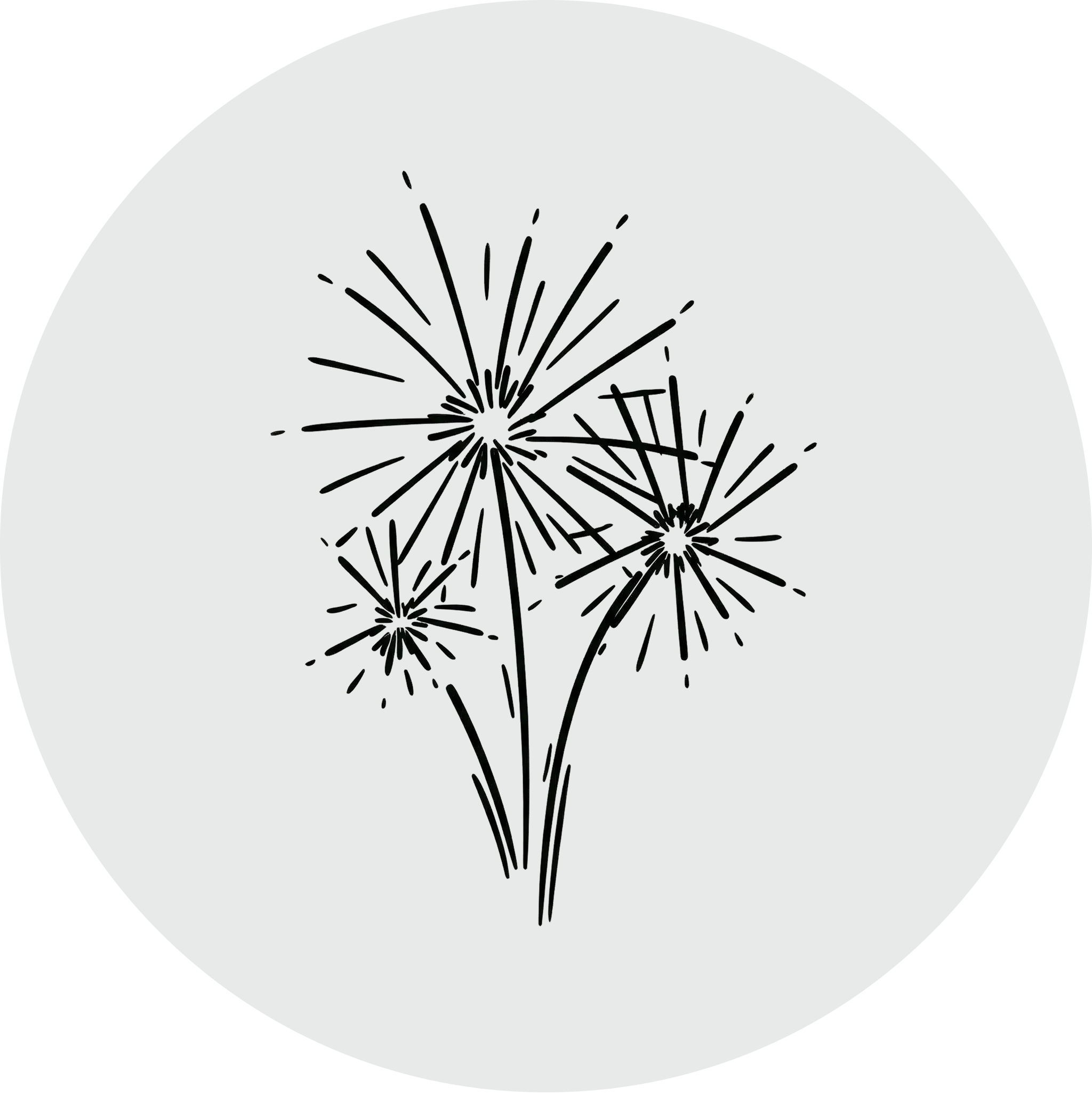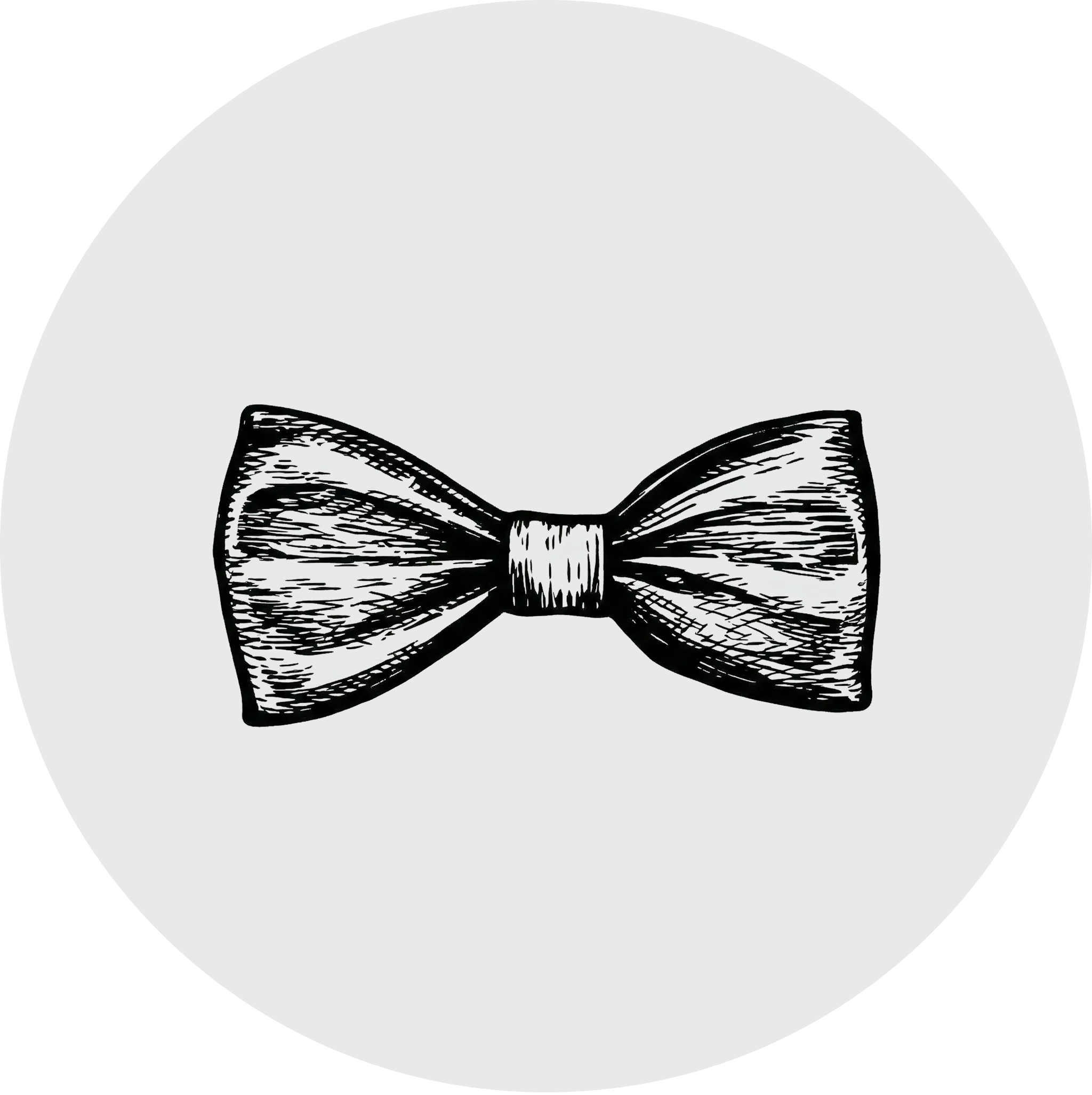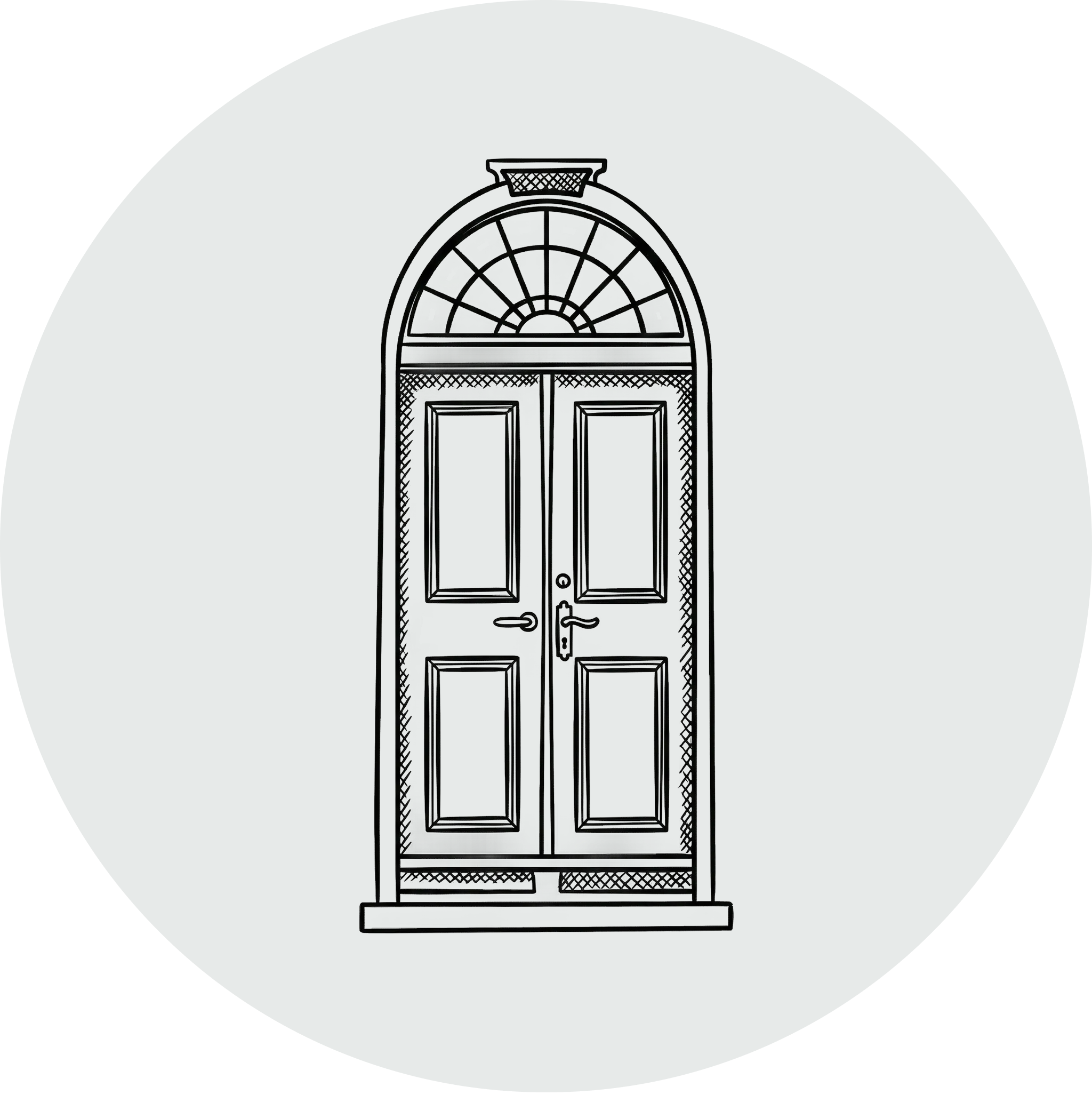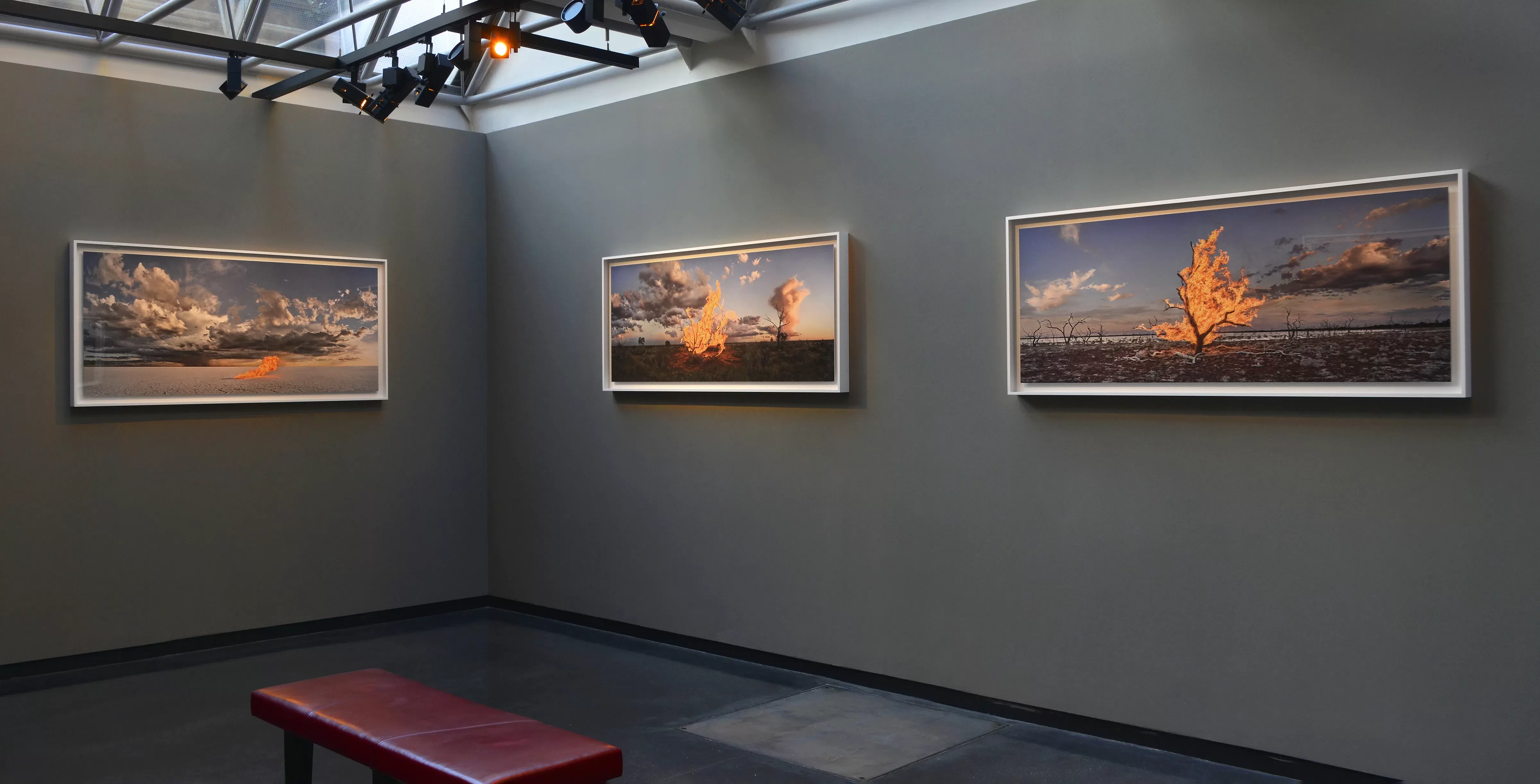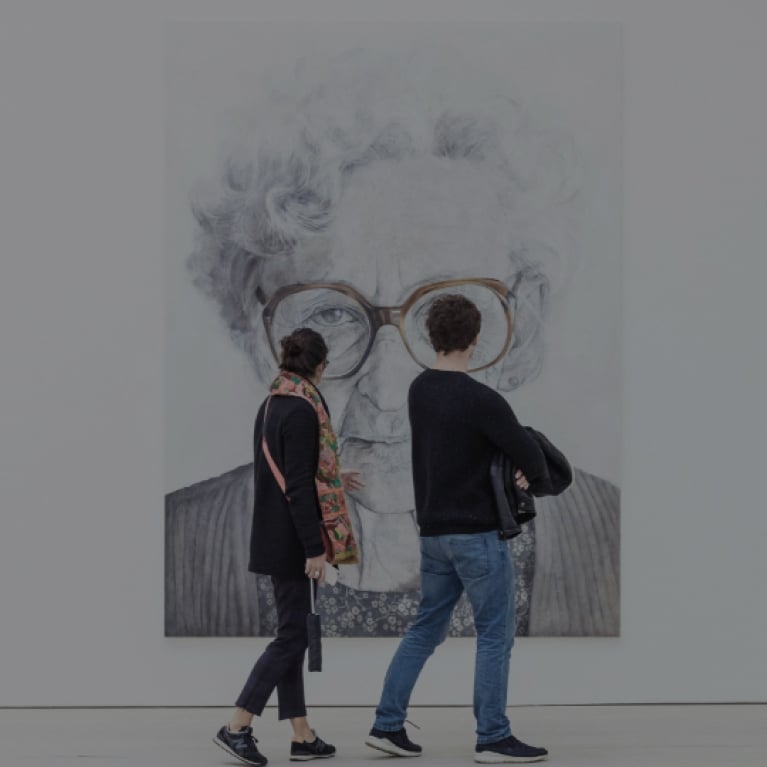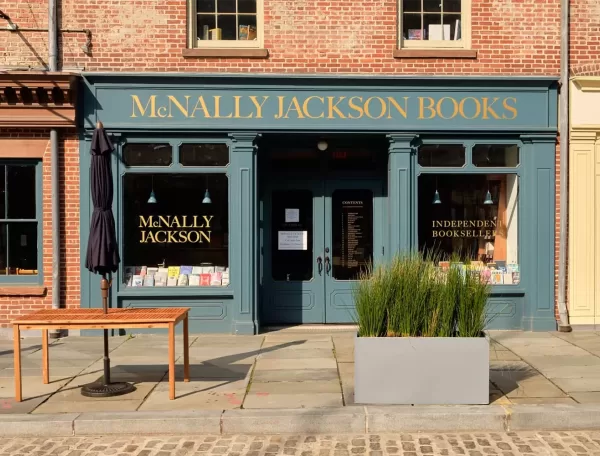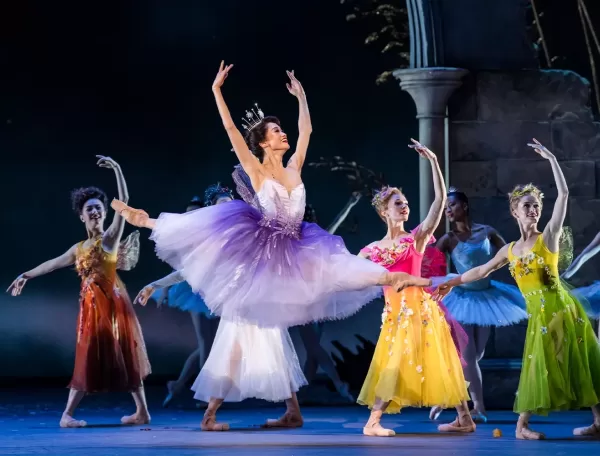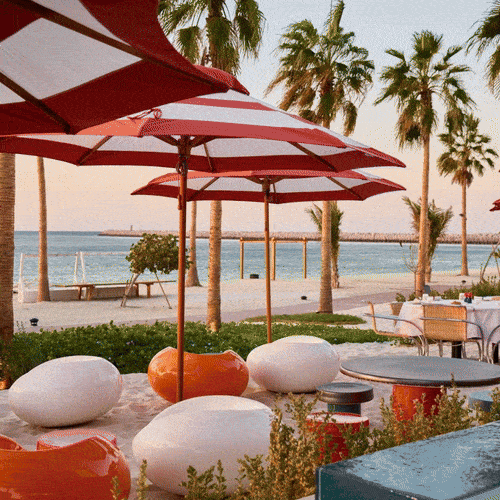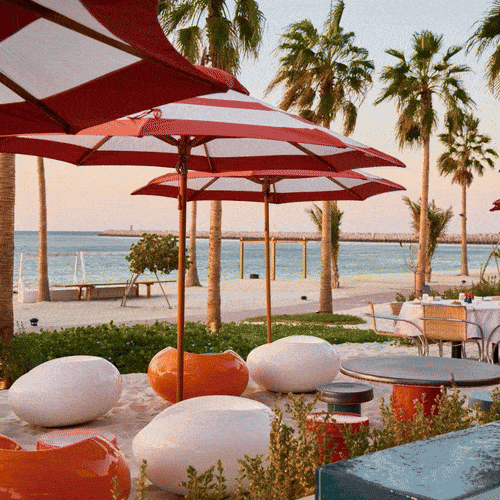Running until 21st January 2023, BLAZE is a solo exhibition based on a new series of works by renowned Australian photographer, Murray Fredericks. Through powerful images of the Australian landscape on fire, it brings to light topics relating to climate change and politics whilst transporting viewers to the vast regions of his local salt planes and river systems.
The creation of this series was an extremely labour-intensive process, but one that was completely obscured in the elegant and minimalist images that are now presented in this show. Fredericks spent weeks scouring The Outback to find the perfect location, which often involved camping for days at a time whilst carrying all the necessary equipment. He would then painstakingly attach bendable gas pipes to the back of dead trees that would engulf them in special flames that cause no damage (a method sourced from film industry pyrotechnical specialists).
Murray Fredricks travelled to London for the opening of his exhibition, where we were able to speak with him during this exclusive interview.
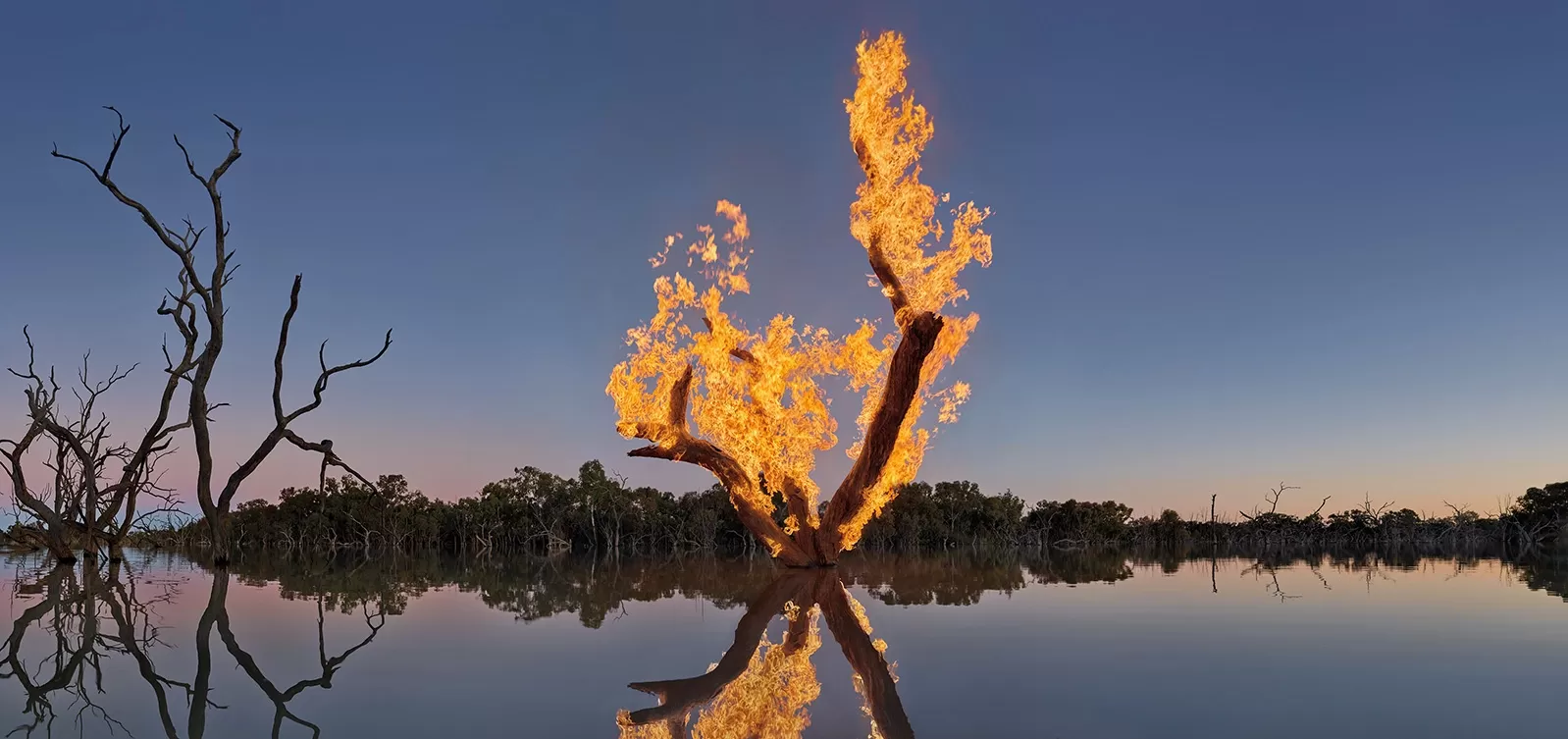
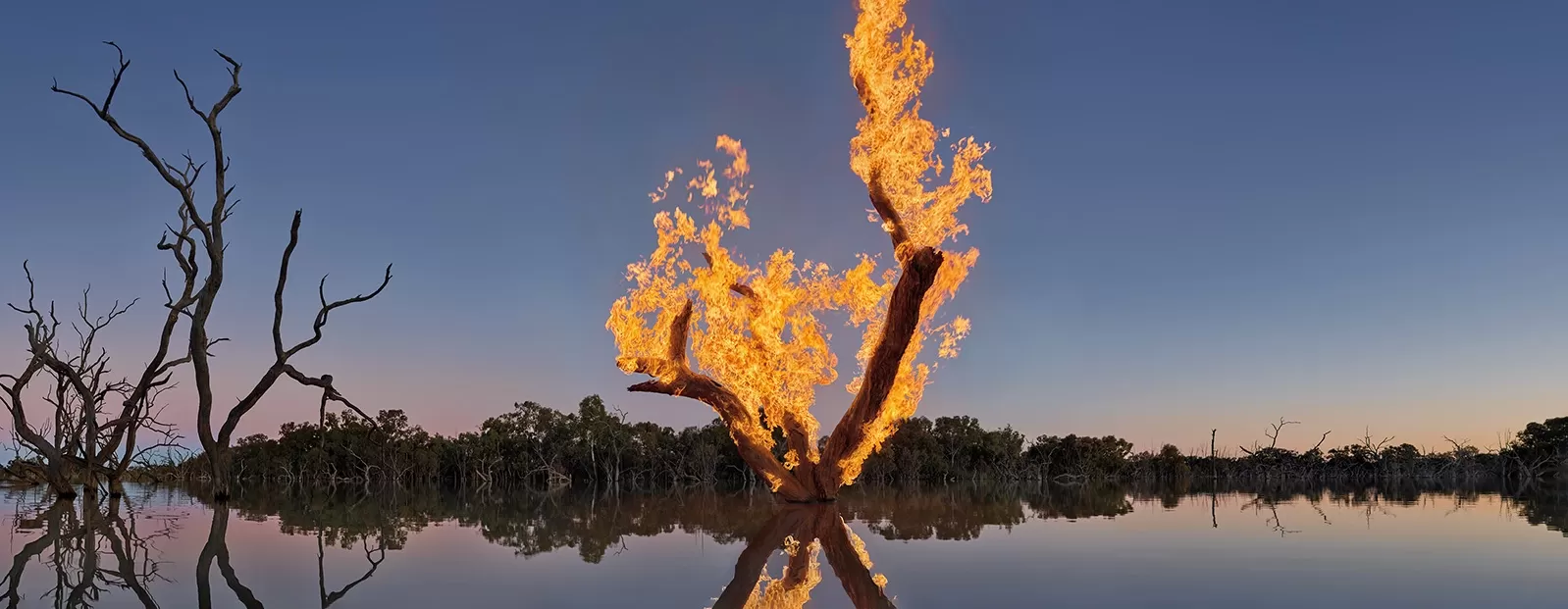
Tandou Great Darling Anabranch
If you had to summarise your latest project in one sentence, how would you define it?
BLAZE is a series of photographs that centre fire as their core theme, depicting the way the environment and the landscape are being affected by man’s intervention in the climate cycles and river systems of the country.
What was it about the river systems that fascinated you?
These river systems are all ephemeral river systems. This means they may only flow once in ten or fifteen years, but they all contain biodiversity and have evolved because the ecosystems bounce back to life when the water does come. What has happened due to climate change – and also due to man’s intervention in the water flow – is that a lot of these river systems have been stressed beyond where they have evolved to cope. So, although this is not intended as straight-up political or environmental activism, it definitely responds to the effect of man’s intervention in the climate. This is reflected in the choice of location; every location in these images is under threat by man’s intervention in the climate and man’s intervention in the flow of water.
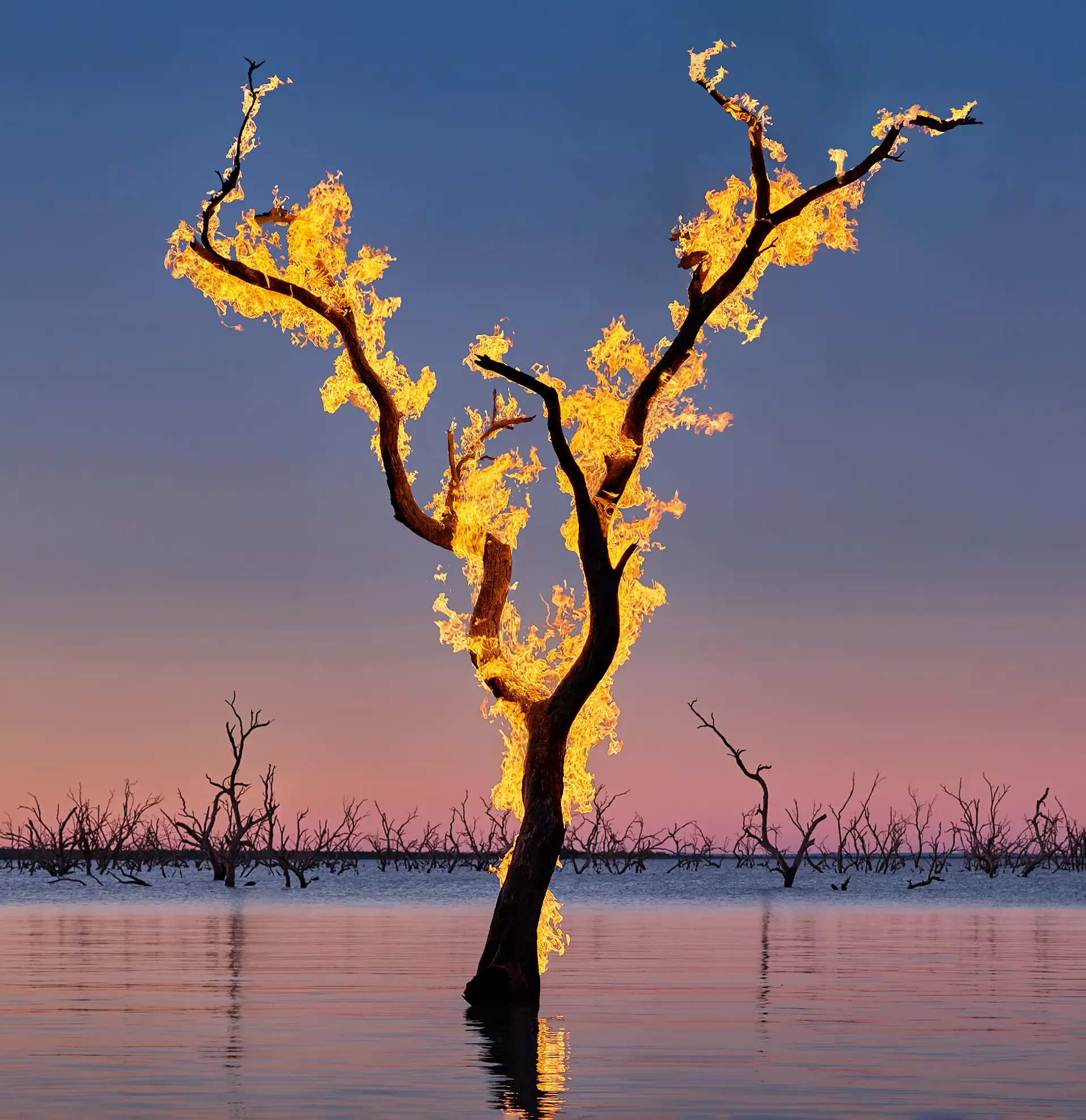
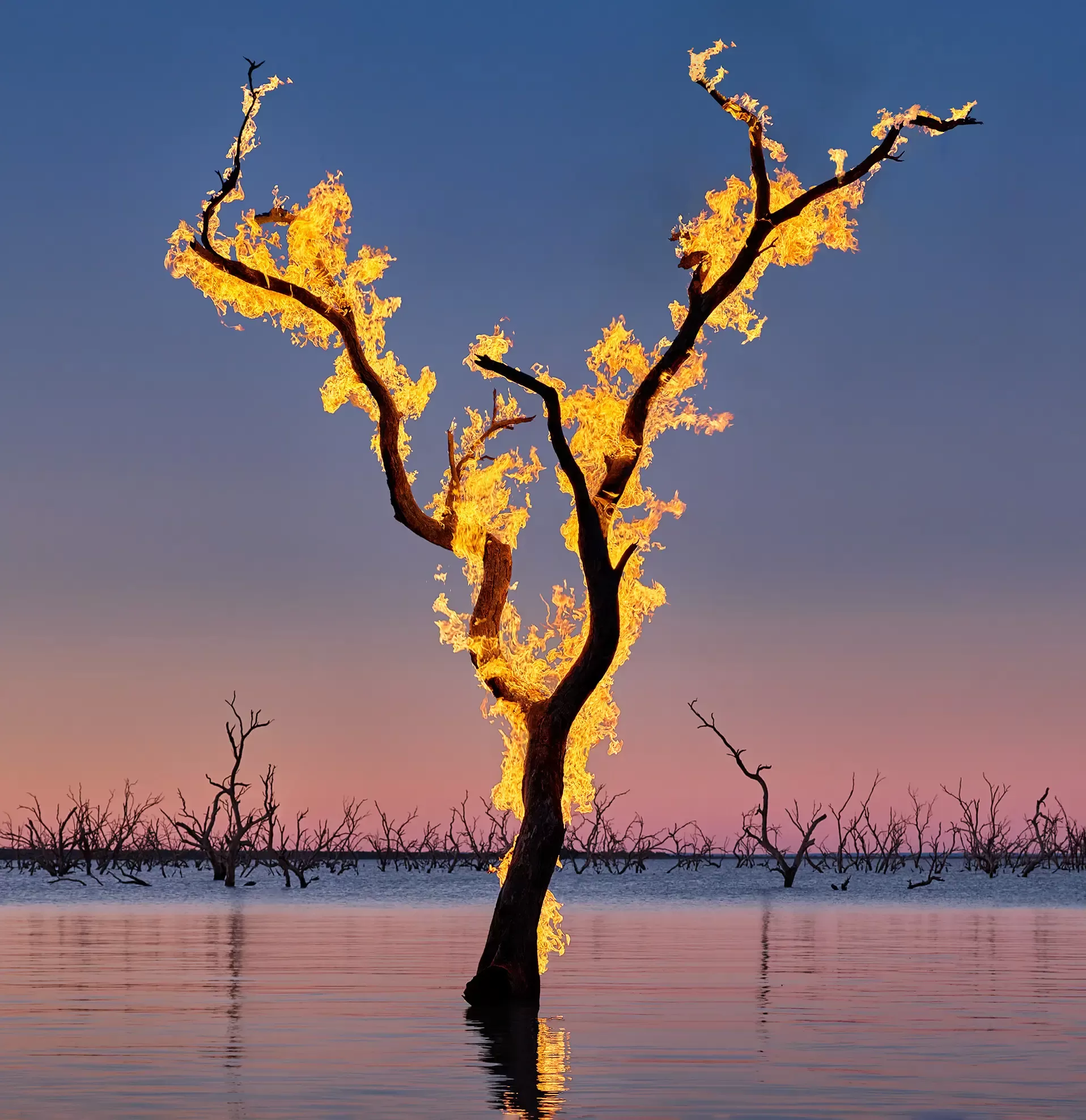
Lake Pamamaroo Menindee
"Every location in these images is under threat by man’s intervention in the climate and man’s intervention in the flow of water."
-Murray Fredericks
Did this project grow organically from previous work you had done?
From previously working with the Salt series [a project depicting the expansive salt flats in the middle of Australia’s Lake Eyre], my interest has been in getting a response to infinity and a response to a sense of infinite space. What happens when we are not able to quantify the edge of the frame? I have been abstracting the landscape into a photograph by denying elements of scale. In this new series, I have kept that sense of space that is true to the locations and environment that all these images were produced in, but I have slipped in and made fire, flame, and – specifically – our evolutionary response to flame into central themes of the work.
"I have been abstracting the landscape into a photograph by denying elements of scale."
-Murray Fredericks
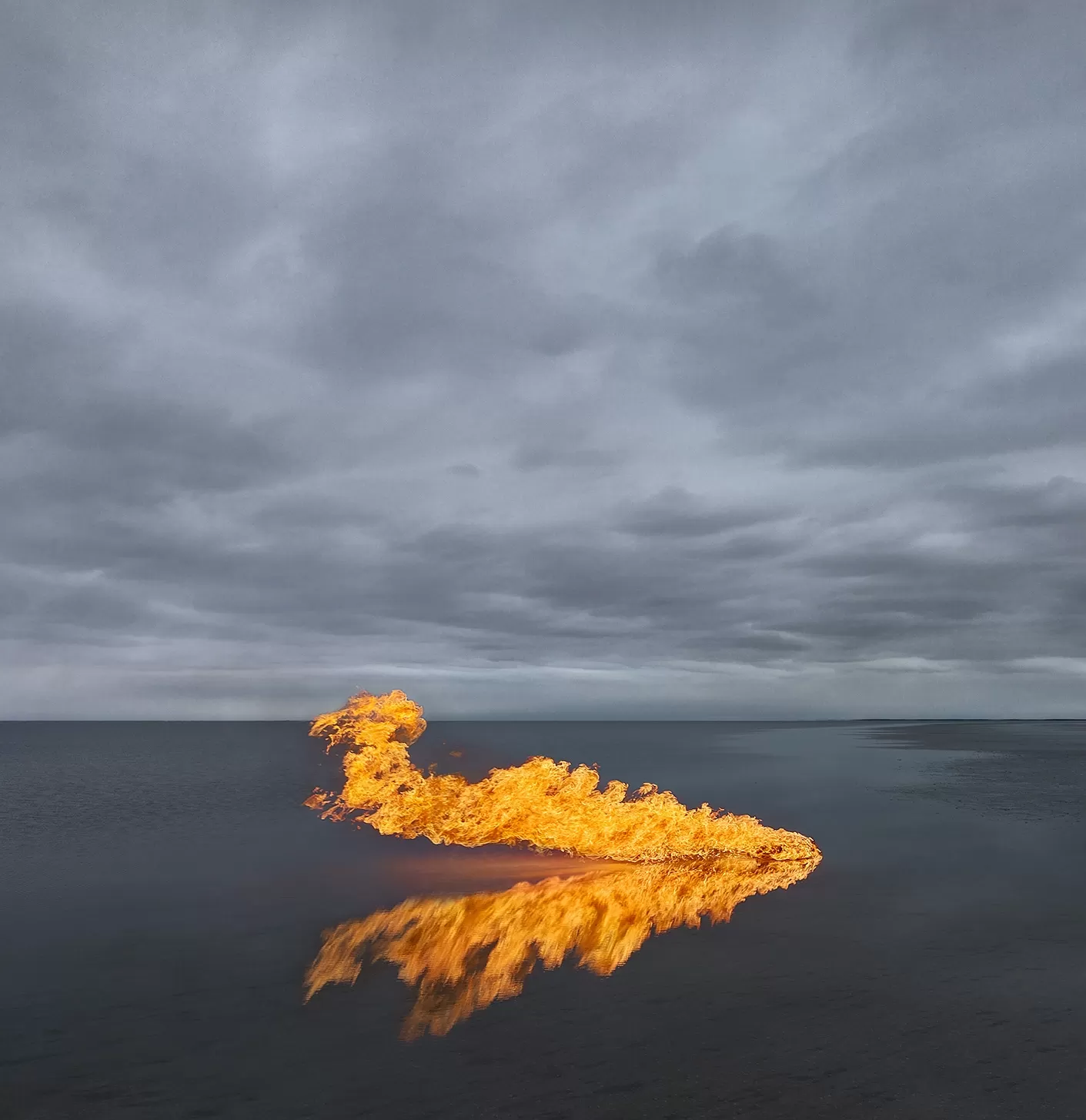
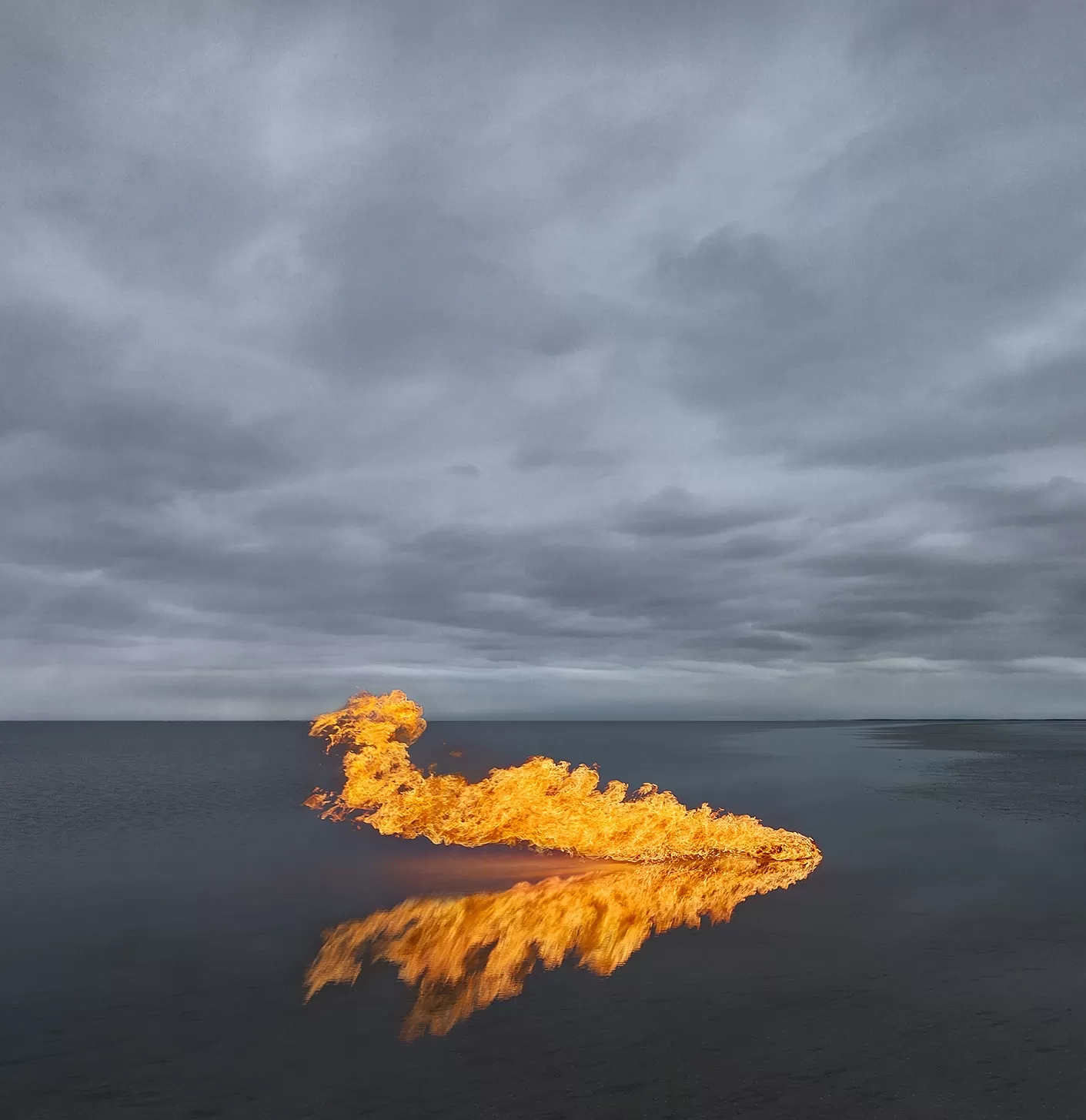
Muloorina
It is really incredible how you capture the flames on the trees – were you worried about any potential hazards?
It’s very important that the wood itself is not on fire; it is the gas behind the branches that creates the appearance of the tree on fire. One of the parameters that we set up for this series is that it is non-destructive. Even though these trees are dead they are very important for animal habitats. We set up a system that did not harm that at all.
To find out more about BLAZE, please contact your lifestyle manager or watch the accompanying documentary trailer here.

